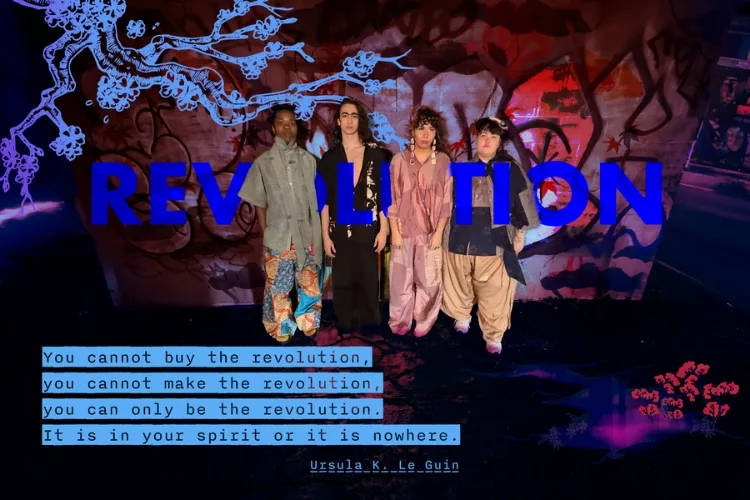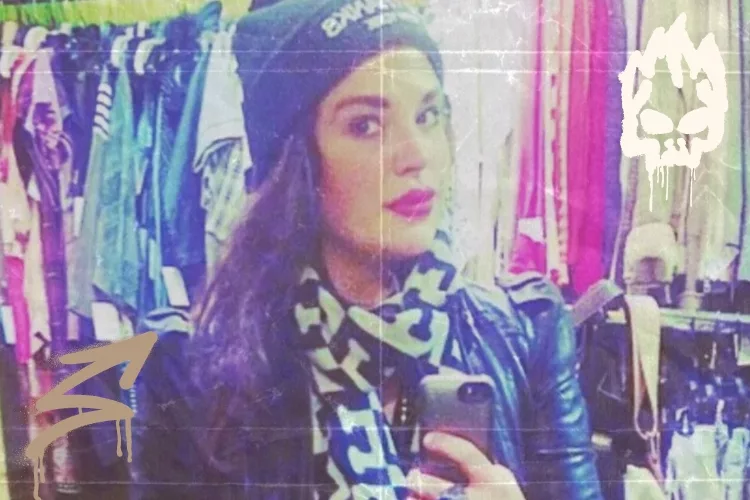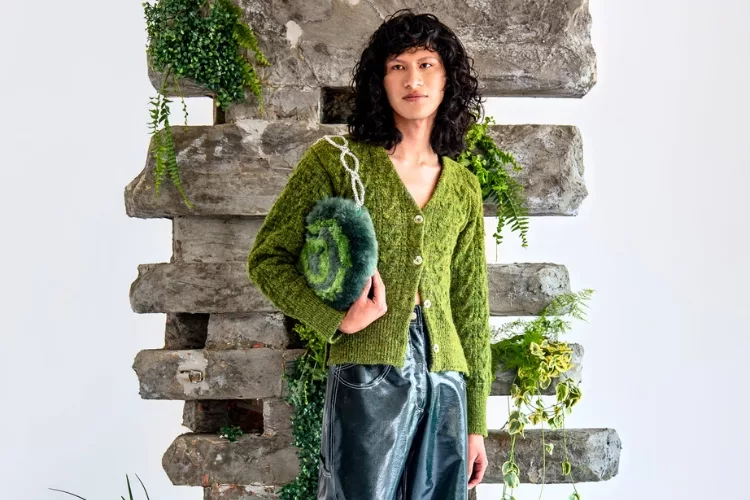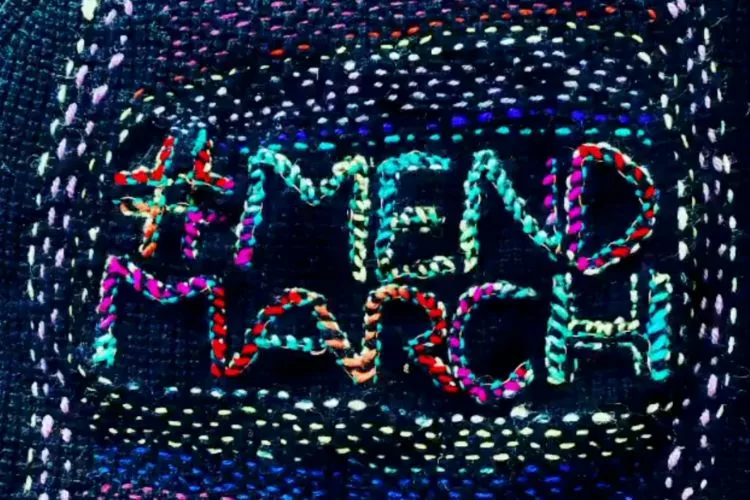When we write ‘on our radar,’ it usually is about a new designer we love. But we’ve come to realize that not only do materials matter, they matter most. And NFW’s materials like plant-based leather are positively game changing.
I recently wrote that polyester should be banned from collections for competitions or fashion school graduate shows. This got a lot of push back, but the reality is that the fashion of the future can’t be derived from materials that will poison the Earth. Not if we want a planet that supports people. I know that sounds radical –especially when the number of garments we own made of synthetics is on target to increase in the coming decades. Which is why we need to know about alternatives.
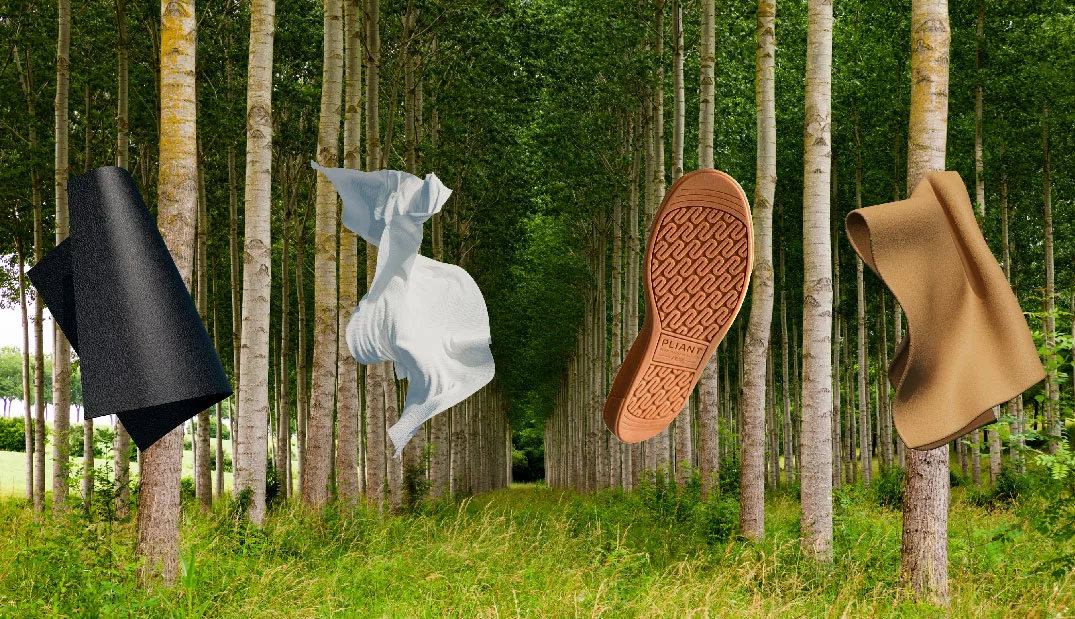
I’m not sure when exactly Natural Fiber Welding/NFW* came on my radar but I admit the decidedly unsexy name confused me. Welding? Do they make clothes for construction workers? Like Carhartt but different? Ummm, no!
NFW’s mission is “to invent and manufacture shockingly sustainable materials from plants. Beginning with inherently circular, natural ingredients, NFW is making a material-rich, plastic-free future possible.”
Their current portfolio of materials includes MIRUM, a plant-based leather; CLARUS, a performance fabric that gives natural fibers previously-unachievable functionality; PLIANT, footwear outsoles with no synthetics; and TUNERA a plastic free foam that can be used in a variety of products. While TUNERA is still in the development phase, CLARUS, MIRUM and PLIANT can be found in market with MIRUM being the most readily available. In fact, several companies are already using MIRUM to create highly covetable vegan handbags.
I was curious to learn more, so chatted with Greg Stillman, VP Product Line Management (pictured) who answered all my questions and more.
Katya/NKM: How did NFW begin?
Greg: It was started by Luke Haverhals. At the time Luke was a university professor who had come up in the research realm of biomaterials and biomass used for different outputs.
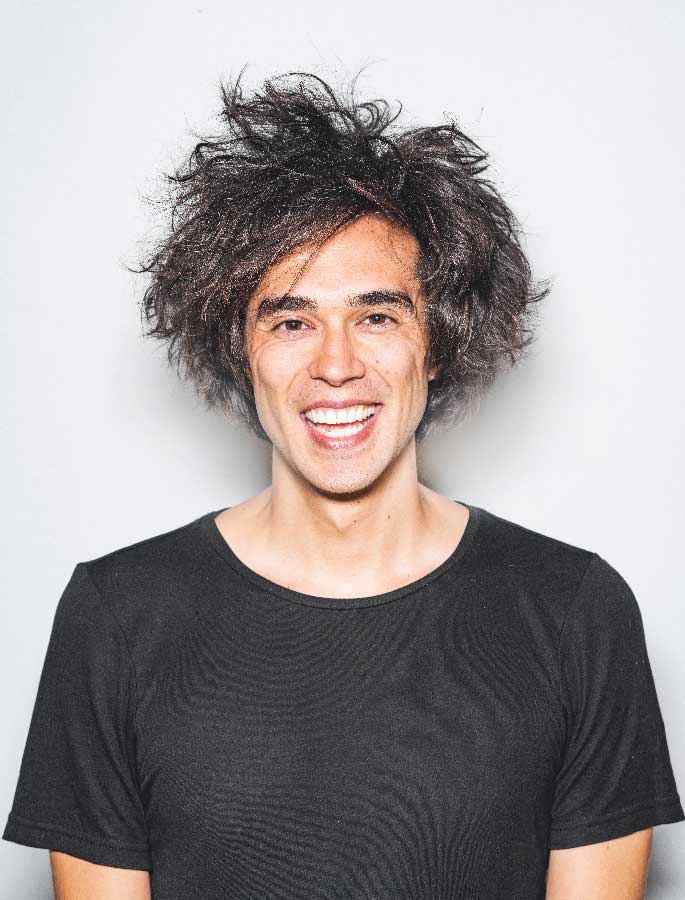
One of his research topics was actually the beginning of the fiber welding, where we get natural fiber welding from, (which has since been shortened to NFW). Except Luke, being a bit of a contrarian, didn’t like the idea of taking very ordered biomass and breaking it down into its constituent parts and then building back up kind of macromolecules.
He thought, Well, Mother Nature has taken these materials, these polymers like 80% of the way there. So we just need to tweak this last 20%. And so his approach was always, instead of breaking things down, how can I reformat what Mother Nature gave us to add performance or some other desirable quality without stripping all the way down to the Lego blocks, building all the way up.
And once he figured he had enough of the fundamentals nailed down through his observations, he asked himself, Do I want to push this onto the world through the academic lens –like paper and manuscripts and conferences –or should I make a company out of it? And he believed he’d have a broader impact through a business lens.
And a company was born! Let’s talk about MIRUM. It’s described as plant-based leather, but there’s cactus leather and apple leather, and, of course, mycelium. So what makes MIRUM unique?
MIRUM is essentially a rubber composite made from latex.
Currently, all the other plant-based leathers–the cactus, etc– utilize plastics as coatings. So they are not compostable or plastic-free. MIRUM is unique in being the only material of its kind that is 100% free of plastic/synthetic ingredients.
How does latex compare to other naturally sourced materials in terms of the environment and performance?
Latex, known as rubber from the rubber tree, is abundant on Earth. It can be grown in regenerative ways. And it has really advantageous material properties. It’s flexible. Under the right conditions –what we call curing– it can be quite robust in terms of protection from the environment. You don’t want a material that, if it gets wet, rots, or degrades in the sun.
The core innovation behind MIRUM is this curative –the way it goes from a latex to a finished good. It’s core to our mission, which means it’s plant-based and recyclable, so you can break and reform those curative bonds.
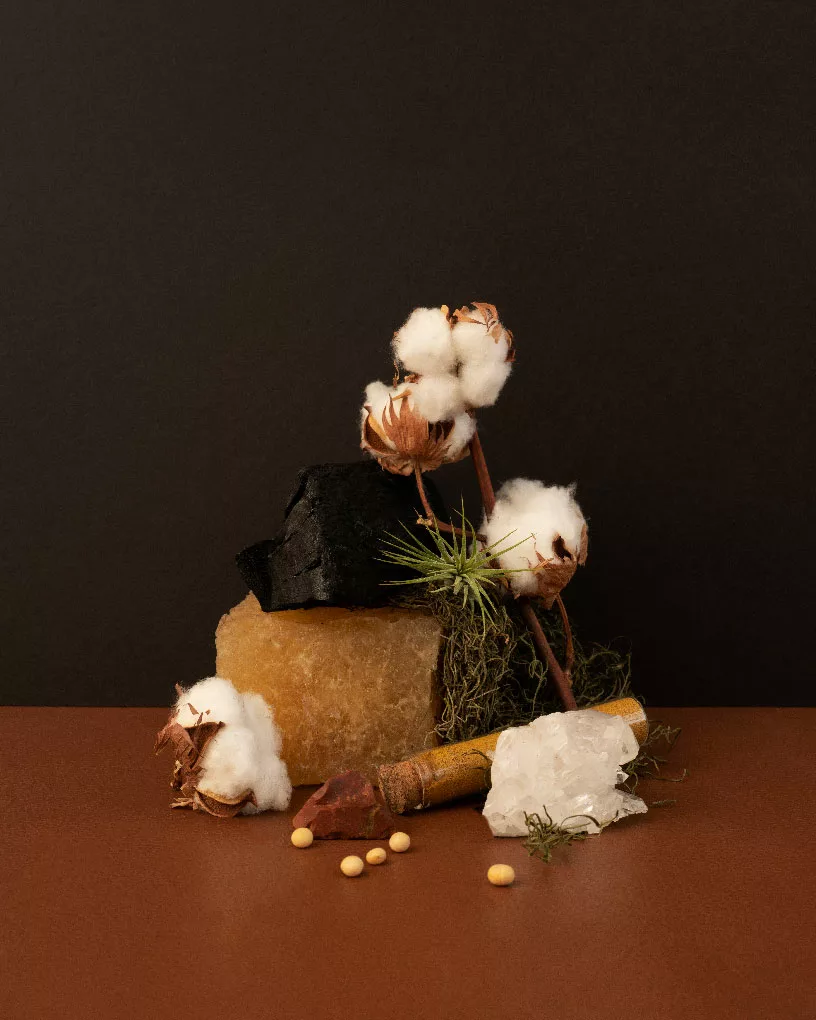
I have become obsessed with cradle-to-cradle. At the end of a product’s useful life, it’s biodegradable and compostable. This can’t be said for most vegan leathers because as you’ve mentioned they have a plastic component. But since MIRUM doesn’t have that plastic it is biodegradable–essentially circular?
Yes, at the end of life, it’s perfectly benign. We’ve run tests on end-of-life compatibility. And it’s food for pill bugs, for example. But it will also degrade at the appropriate timestamps for long product lifetimes, biodegradability and circularity. i.e. we don’t make fast fashion throwaway shit at NFW, our primary focus is actually how long can our materials last in their intended use? In many ways product durability and biodegradability can be at odds, but not when you only use natural ingredients!
Super exciting. I know another thing that separates MIRUM from other materials is that you all have been able to scale. How is this possible?
Well, how we process MIRUM today leverages an existing supply chain and industrial foundation already at scale. So MIRUM, if you think about it at an abstract level, is unique chemistry on very non-unique means of production.
We buy commercial rubber processing equipment from commercial facilities. The processing is hundreds of years old. And so most of what Luke puts out into the wild regarding scaling up is taking advantage of this conceptual approach. We don’t have unique machines. We don’t have to invent new processing techniques.
We put our heart and soul into the material science to create a unique product that could benefit from this existing infrastructure and this existing means of production.
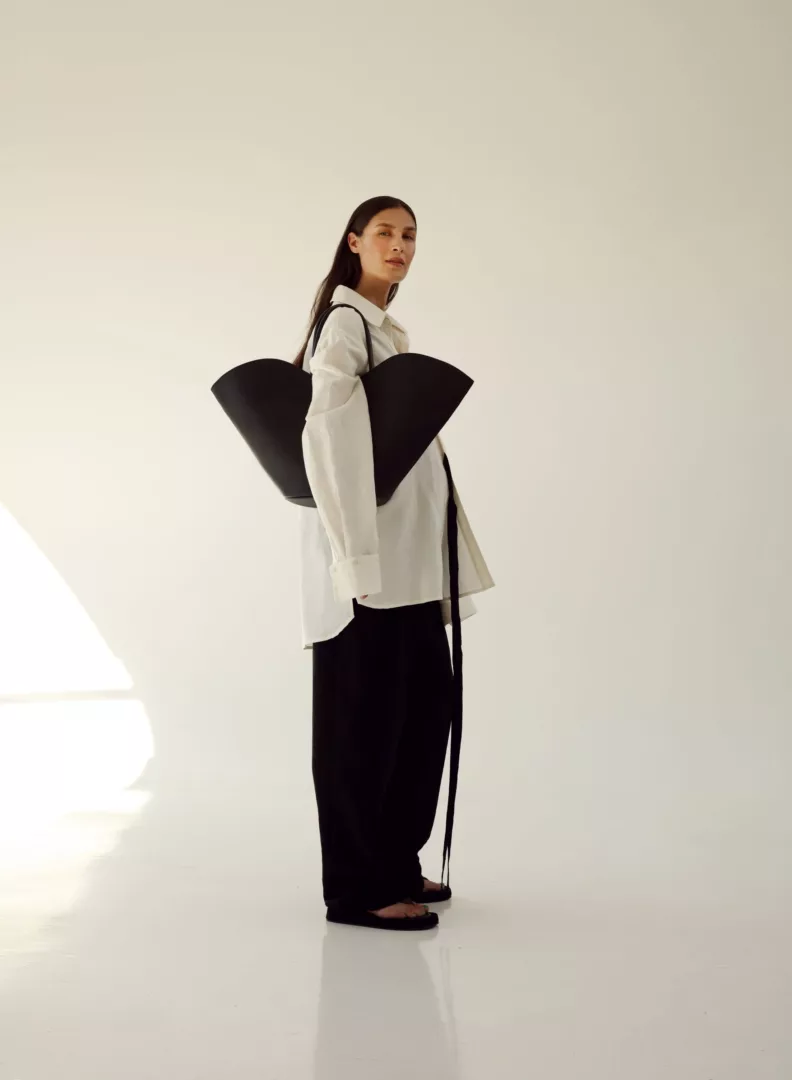
That’s interesting because I feel so much resistance to new and better material –and excuses to continue with plastics–is the scaling issue. “Oh, it’s too difficult. It’s too expensive to use other materials.”
Looking around my office here, I’d be tempted to think the most scalable thing that humankind has is plastic because I see plastic everywhere. In fact plant matter and biomass from plants dwarfs plastic like 100 fold on this Earth.
If we think about a material ecosystem that can supply demand at reasonable prices, our usual thought about plastic is wrong. Because plastic, relatively speaking, is more expensive and less abundant.
The whole thesis, to bring it full circle, was to use plant matter for its abundance but eventually push that supply chain into more regenerative practices –because we all know the kind of downfalls of the modern sort of mono-culture practice in in agriculture.
pictured: Will tote made from MIRUM plant-based leather by ASK Scandinavia
This way, we can get carbon benefits, biodiversity benefits, abundance benefits…and then our material science can get this plant matter into the right form factors so that you and I, as consumers consider it an object of desire.
Then we have these positive loops where consumers desire things derived from well-thought-out agriculture that sequesters carbon and brings back ecosystems. It’s the opposite of the negative loop we’re currently in with the petrochemicals.
Thanks so much for that explanation! It helps me, and I think it will help our readers to fully understand the benefits of MIRUM.
All About Clarus
I want to jump now to CLARUS which, if I understand correctly, will have the performance wear-ability normally seen only in synthetics. This is so major if we’re to get rid of polyester.
The science behind CLARUS is to reformat a natural textile to be more synthetic. And we mean synthetic in its features and benefits, not synthetic in its origin or at its end of life. So, we treat yarn by re-engineering the hydrogen bonds that are present in cellulose and other natural fibers.
By doing this, we’re trying to literally give this yarn a new shape. And we coerce these natural fibers through these hydrogen bonds to begin to compete with these synthetics.
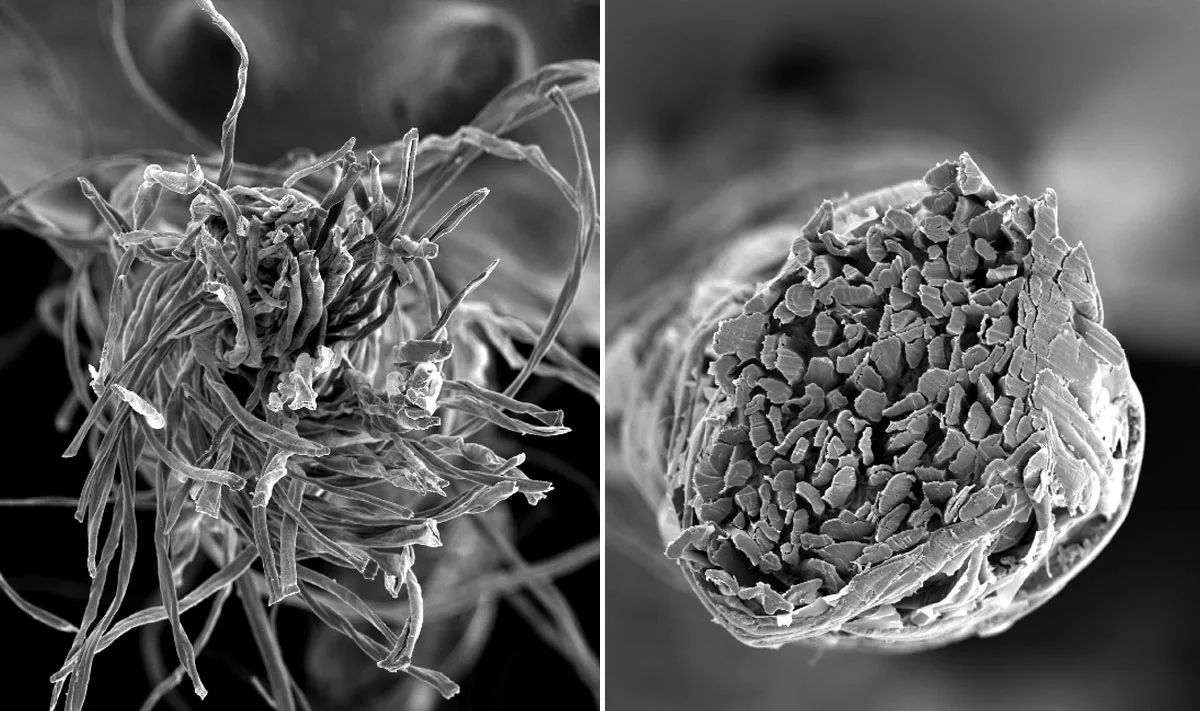
What I mean by this format, this literal shape is here in these two images. So one thing you can notice immediately is that the shape is tighter, less pore space. So that means when it’s wet, it will weigh less and have less iteration at wet pickup. You can see that all the fibers are very tightly bound and are bonded through these hydrogen bonds to their neighbor. (img on right)
So, in terms of pilling and abrasion strength, this will be an excellent choice of material. But we can also moderate the treatment to make it a bit nicer on the hand for apparel. And this is literally what we’re doing day in and day out to try to mimic some of the synthetics in the CLARUS side of the family.
Are there any brands using it yet? Is it in the market?
We have a few products in the market with an early partner RL –Ralph Lauren. They’re primarily a cotton company, so you don’t see them much in the activewear/athleisure segments. They wanted something with performance capabilities.
We launched products with Ralph Lauren that are made with cotton but through the CLARUS platform. This allows for performance capability like: moisture wicking, faster dry time, and comfort during exertion. But it’s still cotton with all the benefits of a natural fiber, including you can grow it regeneratively. You can even use recycled cotton, which is usually the choice input on our side. And then it’ll stay cotton, and it won’t have any plastic microfibers or end-of-life problems of synthetics because it’s still one-hundred percent cotton.
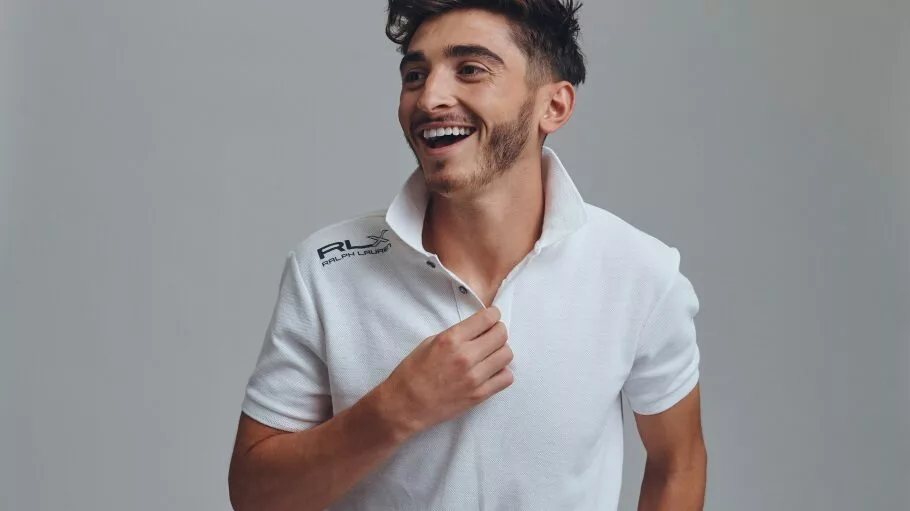
So is CLARUS something leggings would eventually be made out of? I’m dying to get rid of leggings altogether because I hate them. But that’s just my aesthetic.
Here’s the deal with leggings. Most people say from material science that the stretch is really important and that having stretch cotton would be a significant breakthrough. It’s actually not the stretch that’s the challenge; it’s the compression. And so most people who wear leggings, aside from the aesthetics, will report positive comfort from the compression afforded through a polyurethane material. So we have some ongoing work to see if we can mimic the compression of synthetics using all-natural inputs. It’s very challenging, but we’re on it!
And if we can’t eliminate leggings as a fashion choice, hopefully, you’ll be able to make them better! (laughs) What company so far has been your favorite collaboration? Who worked with your materials?
I like companies that are willing to take some risks. So I got to give any of the ones that have been early, props like Allbirds in footwear. Very recently, we announced some work in automotive with BMW. And I have to give them props because many brands have no desire to be first in their risk adoption. But everybody is desperate not to be last.
Everybody is on edge, looking at the first person like “ah, did they make it, or did they fuck it up?” So I really have to give it up to the ones that went first because it’s a substantial risk. It’s not like we had a bunch of products in the market we could point to and say, “Obviously, this is going to work, no problem.”
Right.
And so any one of those, whether it was Allbirds, RL on the apparel side, BMW for automotive, when everybody else was sitting on the bench eating popcorn, waiting for the first one to either fail or be successful, they were putting their money where their mouth is. And fashion is a surprisingly risk-averse industry.
And maybe I shouldn’t be surprised because they’re making money hand over fist with this business model that they’ve had for the last 50 years. There’s minimal incentive to change if we’re honest. Make it somewhere else for $5 and sell it in the United States for $95. That’s a pretty profitable business model!
Right!?! I know it scares me! I feel like the more I learn, the more I won’t be invited to dinner parties because no one wants this knowledge drop! I just reposted an article on LinkedIn about recycled plastic pellets that turned out to have all these crazy chemicals and even drug residues in them. I’m like, “Once again, let’s get rid of plastics!” But if I tell everyone everything I’ve learned…no, no more dinner parties!
Well, I heard a story that’ll make you even more insane on recycled plastic. Now, the premium between recycled polyester and polyester is so significant. I’ve never seen it but I’ve heard stories of manufacturers taking their virgin line of pellets and taking the bucket and walking it over to the recycling line and taking the virgin and putting it into the melter of the recycling line. And it’s technically recycled.
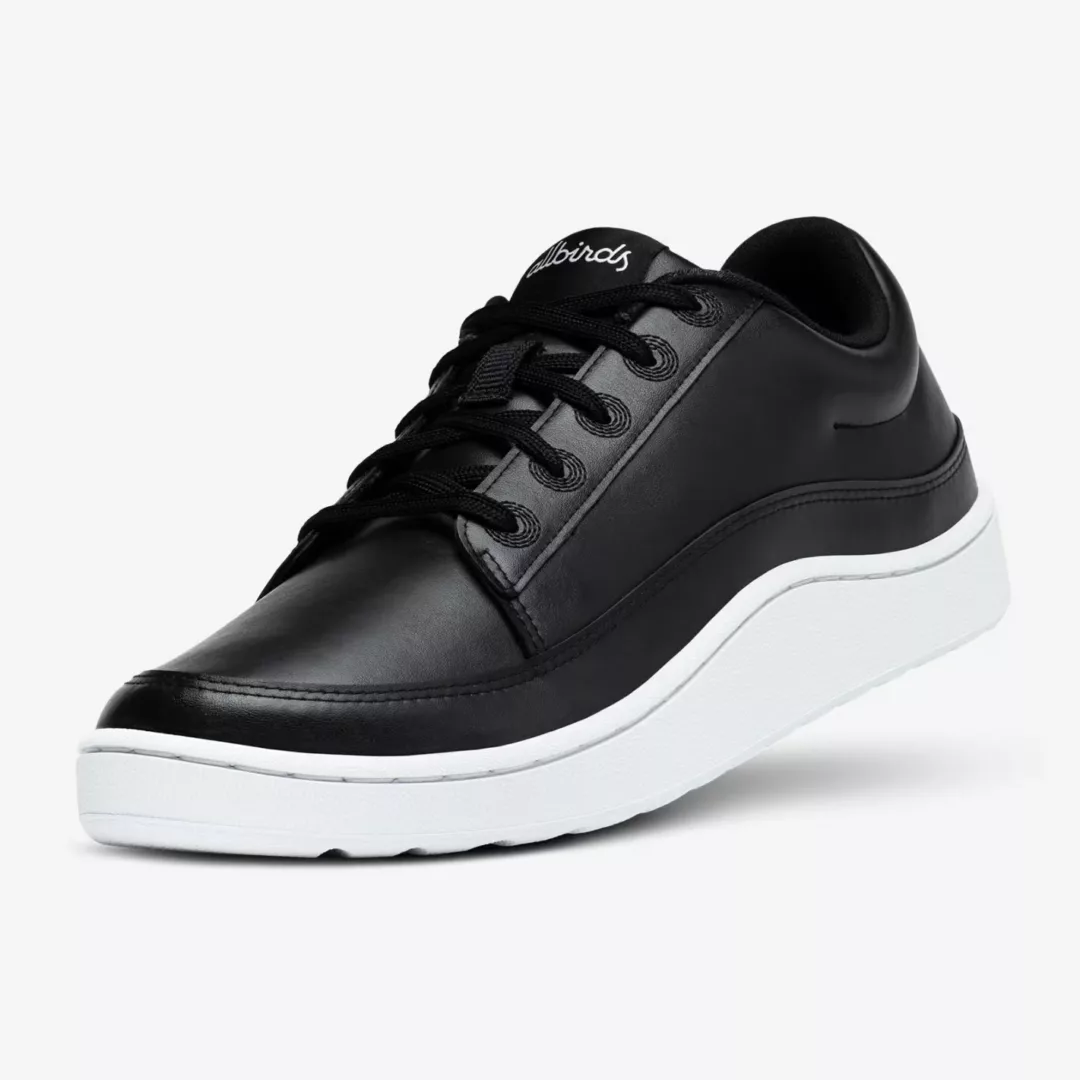
Oh My God. They’re evil. They’re just evil. They’re killing the planet for profit and it makes me crazy, which is why we love what NFW is doing –it’s so necessary.
Your bio says you’re an avid thrifter. Any thrifting advice for our readers who are also avid thrifters? I’m in San Francisco and we have some legendary thrift on this coast and kind of the Haight-Ashbury areas, but I think it’s less about where you go and what you go for. I think your readers should focus on thrifted, vintage animal protein sweaters, whether cashmere, wool, linen blends, or whatever they are.
One, they keep extremely well, like literally over the decades. And Two, they’re original performance fibers. For example, wool can be thermal insulating when wet. All the biotech and synthetic innovations in the world can’t compare to these original materials.
And so, whether it’s your neighborhood thrift or online, I got to put a plug for the noble fibers. I think they’re worth it.
If someone wants to come into this space of new materials, what should they be thinking about or studying?
There is a need for an interdisciplinary merger, which is like the sciences and the material folks and the design and the communication, the business, the merchandising kind of folks. I think we need to hybridize these minds together so that the future designers who are being educated today understand a bit of the pedigree of these different materials. For example, polyester comes from oil. Many people are unaware of this.
I know it’s wild.
But also, I think there’s a lot of creativity, in the material sciences. Certain polymers are great at flexible things, and others are terrible at it.
And designers thrive by understanding these materials in almost a visceral way, like a touch-and-feel way. If they understood more of the chemistry in the polymers, it would articulate and make their design decisions more acute. Right now, it’s one dimensional deep in terms of its understanding and inspiration.
What advice might you offer a young person looking at the world today who feels fear and despair due to climate issues?
While the world has plenty of problems, if there’s one thing I’m going to still bet on, is I believe in humanity’s innovation and willingness to stick to the right course of action despite seemingly difficult odds of success.
And more importantly, if brands and people tip towards this vote with your dollar / conscious consumption, etc., there’s no end to what that innovation can bring about. If everybody’s stuck in business as usual, we’ll be stuck in business as usual.
But there’s enough now to suggest that those who will take risks will be rewarded; therefore, business as usual is under attack, which means there will be a new guard. And I am very excited to see what that brings.
*The company was originally called “Natural Fiber Welding” but has recently shortened it to NFW. Since it’s still known by the longer name, I refer to it here as well.
Related Articles


